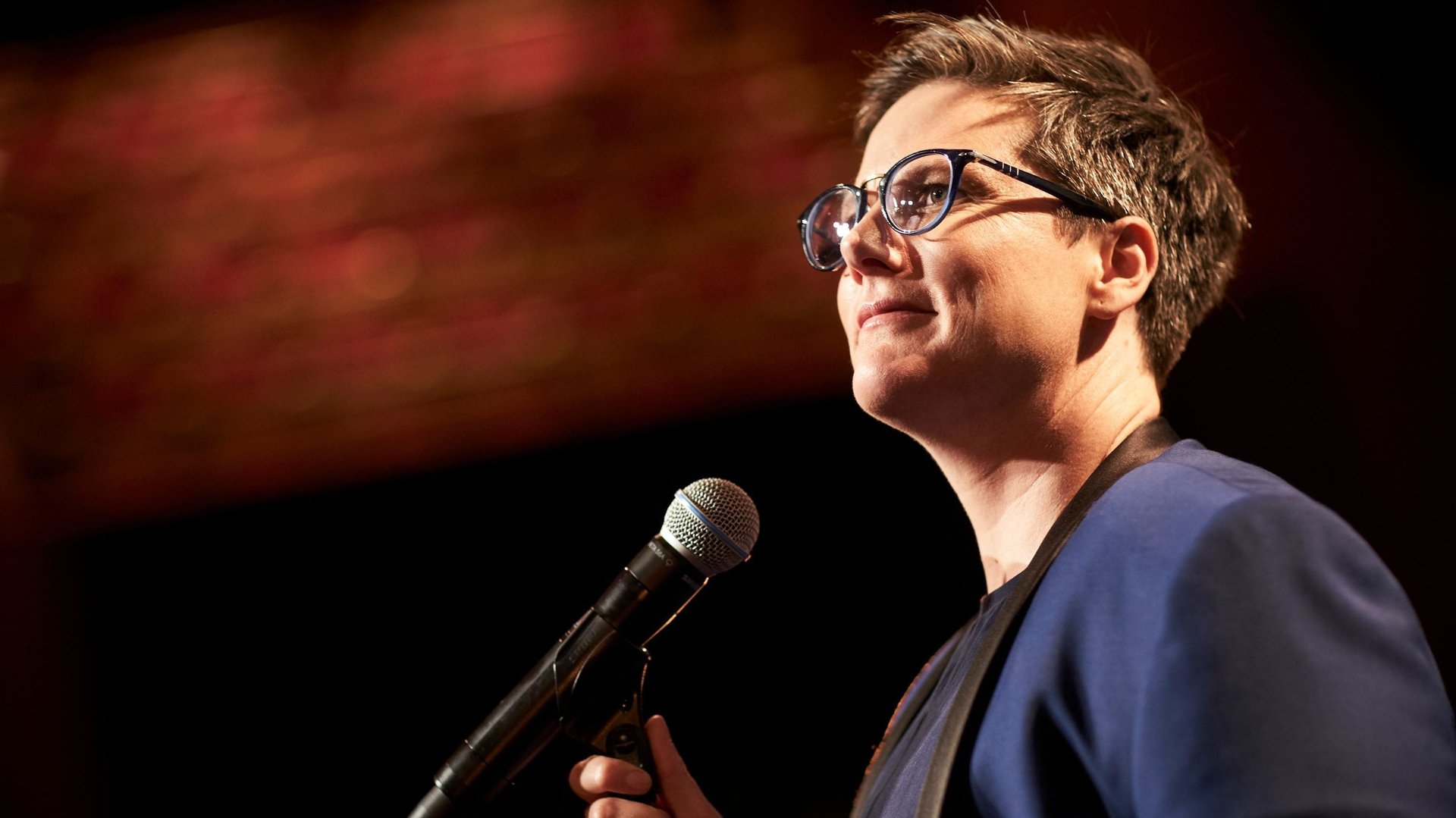Hannah Gadsby rewrites the way we tell jokes in “Nanette”
“You won’t hear too many extended sets about art history in a comedy show,” says Hannah Gadsby, the Australian comedian about two-thirds of the way through Nanette, her new comedy special on Netflix. “So, you’re welcome.” By this time though, the audience is fully aware that what they are watching is not a normal comedy show.


“You won’t hear too many extended sets about art history in a comedy show,” says Hannah Gadsby, the Australian comedian about two-thirds of the way through Nanette, her new comedy special on Netflix. “So, you’re welcome.” By this time though, the audience is fully aware that what they are watching is not a normal comedy show.
The first third of Gadsby’s set, performed at the Sydney Opera House, is a mild-mannered riff on lesbian bossiness and what it’s like to be an outsider. (Where are all the quiet gays, she charmingly wonders, calling the Pride flag “busy” and rhapsodizing about the gentle pleasures of a cup of tea.) She does this to warm the audience up, to get us into a state of relaxation—before deconstructing not only her own jokes, but the very notion of how comedy functions with intellectual savagery and deep emotion.
The rules of engagement for comedy are widely spoken of in terms of “punching up”—taking aim at those in power, and Gadsby’s target here is nothing short of dismantling the standard narrative of genius and art in Western civilization. Let’s just say she’s punching way up.
Nanette is about a certain type of artistic dishonestly that happens when we focus on just one part of a narrative—on the trauma of a difficult coming out story rather than the evolution that happens after; on the easy punchline rather than complicated full story. For Gadsby, this hinges on the deep shame she learned to feel growing up gay in Tasmania, where homosexuality was illegal until 1997. She uses art history—in which she has a degree she barely squeaked out of university with, she tells us—to connect her individual story—both the parts she leaves out for comic effect and the parts she dwells on for tension—to the way we’re drawn to certain types of narratives.
Gadsby starts with Vincent Van Gogh, looking at how we’ve come to lionize the idea of misunderstood genius. “Born ahead of his time,” she says. “What a load of shit. Nobody is born ahead of their time—it’s impossible.” By focusing on only one part of the story—Van Gogh’s genius and its eventual worldwide acceptance—we lose the subtler aspects of his narrative. Van Gogh failed to sell paintings not because of the unevolved minds that surrounded him, but because he struggled to connect to other humans because of his madness, she explains.
Though she takes issue with the way his story has been told—along with the bits we’ve chosen to focus on and how that skews his entire life—Gadsby has a clear affection for Van Gogh as a fellow traveller. Pablo Picasso is another story.
With Picasso, Gadsby unravels the Western myth that some ideas, some artistic accomplishments excuse a lack of humanity. To do so she points out example after example of Picasso’s profound misogyny. First she weaves an ironic thread about how the man credited with inventing a new form of perspective from which all angles are considered meaningful utterly failed to consider the female gaze. The she gives form to the idea that great men with big ideas that exclude women from their calculations are not exceptional, they are fatally flawed. Along the way, she continually punctuaties this narrative with the punchline, “but Cubism.”
Make no mistake, this bit is a rhetorical coup that, assuming a passing familiarity with Picasso, is as easily followed as it is brilliant. The jump from Picasso and his teenage mistress to Bill Cosby, Roman Polanski and Harvey Weinstein is not a surprising one.
What startles is her identification of comedy as a sort of ritual of false catharsis. Jokes, she explains, have two parts, a question and an answer, a set-up and a punchline. The set-up builds tension, the punchline releases it. ”That’s my job,” she tells the audience. “I make you all feel tense, then I make you laugh, and you’re like, “ah, thanks for that, I was feeling a bit tense.’ I MADE you tense, this is an abusive relationship.” She goes on to say that stories have three parts, a beginning, middle, and an end. To make a joke from a story, you have to leave out some parts of it, she says, and then picks several devastating examples from earlier in her set.
In a show full of unexpected moments and brutal revelations, the bit that feels somehow most shockingly alive is when Gadsby roars “I am in my prime!” at the audience, fully acknowledging and taking credit for her own skill. Seeing her do this is an unsettling reminder of how infrequently women claim bare aptitude, let alone mastery—particularly in comedy. A missing perspective.
The main takeaway from the show for many reviewers is that Gadsby claims to be quitting comedy, because she’s tired of telling two dimensional jokes that rely on the tension-resolution dynamic at the cost of more complicated stories. What Gadsby has really done is to move comedy forward, to change it in a way that two-dimensional stand-up feels like what it is—flat.